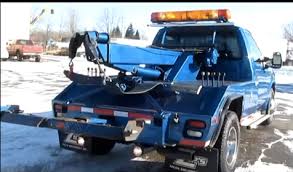California tow rotation program with required drug testing …
By Lori Lal, Guest Blog Writer
Lori is a senior consultant to National Drug Screening
Just like the 70’s television show “Bowling for Dollars”, Towing for Dollars can be a great way to supplement your tow company income – though admittedly without that unique bowling alley “vibe”.
Ever wonder how tow truck drivers are dispatched and arrive so quickly to the scene of an accident or a disabled vehicle? Well, wonder no more. In California, the California Highway Patrol (CHP) Area Commander has established a system of tow districts. Towing companies can volunteer to be on a tow rotation list and within their districts, tow operators can apply for each class of tow trucks to be on a rotation list. This is strictly a voluntary program and is not intended to be a main source of income. The rotation list shall constitute one turn on a rotating list and the operator shall be moved to the bottom of the list once the qualifying event has been completed and the vehicle has been removed from the scene. Thereafter, the tow operator is placed on the bottom of the list and works back up the list.
Operators must have all tow truck drivers enrolled in a Controlled Substances and Alcohol Testing (CSAT) program and must also comply with the current Tow Service Agreement (TSA) terms and conditions. Additional towing requirements are outlined in the TSA agreement outside of the CSAT program.
This is not a self-administered program and must be consistent with the Code of Federal Regulations, Title 49, Parts 40 and 382.
Audits and Reviews
After being approved in the program, the CHP you will contact you regarding your upcoming terminal inspection. This inspection will take place at the employer’s principal place of business or terminal. It is helpful to forward your audit notification letter to National Drug Screening and contact us right away for professional guidance and advice to help assist you in preparing for your upcoming inspection.
The CHP has provided an Audit Checklist (Form-CHP 800F) which can be found at: https://www.chp.ca.gov/CommercialVehicleSectionSite/Documents/N%20chp800f.pdf This CHP checklist cannot list all possible items for meeting compliance but it will help identify problem areas and guidance to improve those areas. If there is a conflict between the CHP checklist and applicable laws, regulations, and policies – these will supersede the checklist.
Items that may be Reviewed:
- Tow Operator Roster – A list of all current tow operator names and social security numbers will be required. You will need to show a negative pre-employment test for each of these drivers in the tow rotation program before the operator is dispatched.
- A driver possessing a noncommercial driver license who returns with a positive test result, which includes medicinal or recreational use of marijuana, shall meet the same reinstatement requirements as a driver required to possess a commercial driver’s license.
- Drug & Alcohol Test Results – All positive results will be reviewed. The driver with a positive test must have been removed from the safety sensitive position and referred to a Substance Abuse Professional (SAP). Many drug testing providers maintain an online portal to retrieve results.
- For all currently employed tow operators, you will need to show proof of distribution of the drug/alcohol testing policy and also the distribution of education materials. Supervisor’s Training Documentation – All supervisors need Reasonable Suspicion Training at the very least. Your supervisors can complete this at our online training website, and upon completion of the training, a certificate of completion will be self-generated.
- The operator shall provide a current list of all drivers and proof of enrollment in the CSAT program to the area office during the open enrollment period. As your TPA, National Drug Screening can provide these documents for you.
- Upon the addition of a new driver, an operator shall be granted a maximum of 30 days to enroll the driver in a CSAT (or consistent) program and provide proof to the area office.
- Random Testing Compliance – you will need to show that your drivers are enrolled in a random testing program with either a consortium or stand-alone random pool. Statistics for the random testing will be verified for the required percentages. The current random testing rate for the tow rotation program follows FMCSA look-a-like and is 50% for drugs and 10% for alcohol. [The rates for 2019 were 25% for drugs and 10% for alcohol.]
Most carriers are able to get through the audits successfully. If you believe your program is not in compliance, National Drug Screening can help you with immediate service. The violations we see most often are as follows:
- No alcohol and/or drug testing program
- No random alcohol and/or drug testing program
- Using a tow truck driver who refused a required alcohol or drug test
- Using a tow truck driver, the company knows had a positive alcohol concentration of 0.04% or greater
- Using a tow truck driver who failed to complete the required follow-up procedures after testing positive for drugsHappy Towing!







